Samuel R. Delany
Samuel R. Delany
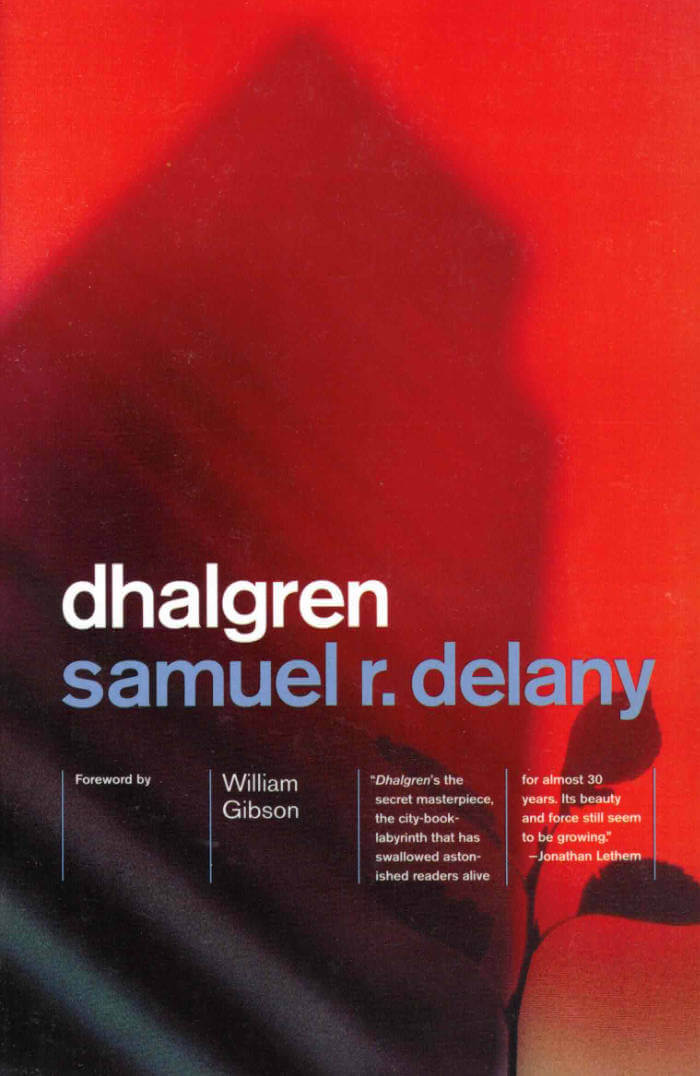
Dhalgren
A mysterious disaster has stricken the midwestern American city of Bellona, and its aftereffects are disturbing: a city block burns down and is intact a week later; clouds cover the sky for weeks, then part to reveal two moons; a week passes for one person when only a day passes for another. The catastrophe is confined to Bellona, and most of the inhabitants have fled. But others are drawn to the devastated city, among them the Kid, a white/American Indian man who can't remember his own name. The Kid is emblematic of those who live in the new Bellona, who are the young, the poor, the mad, the violent, the outcast—the marginalized.

Times Square Red, Times Square Blue (Trad.)
Traduction des extraits par Barbara Sirieix & Sabrina Soyer.
How To Become est une maison d'édition autogérée basée à Paris. Nous publions les textes d'auteuces engagés dans des pratiques féministes et peu diffusés par le réseau des grandes maisons d'édition françaises.
Créée en 2016, elle est composée d'artistes et écrivaires en majorité gouines, HTB publie de la litterature expérimentale née d'influences post-post- sapphiques ainsi qu'un choix de tradu d'auteuices non traduites en langue française. HTB s'articule autour d'ateliers d'écriture: How to Become a Lesbian, et d'une revue annuelle publiant les choses issues de l'atelier.
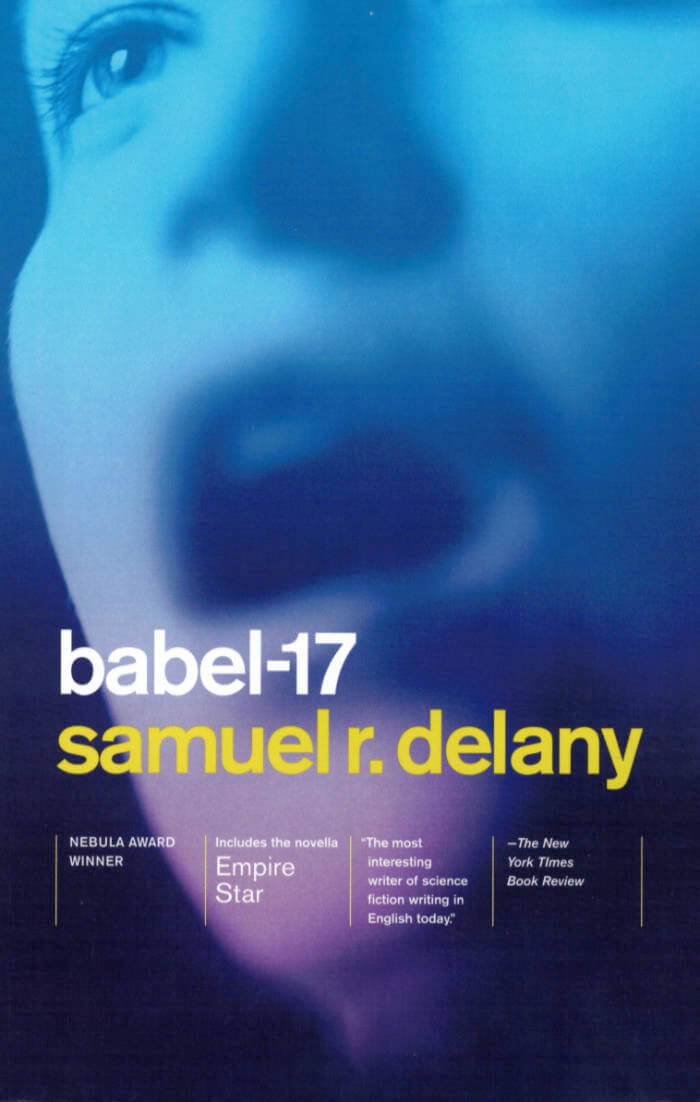
Babel-17/Empire Star
Babel-17, winner of the Nebula Award for best novel of the year, is a fascinating tale of a famous poet bent on deciphering a secret language that is the key to the enemy's deadly force, a task that requires she travel with a splendidly improbable crew to the site of the next attack. For the first time, Babel-17 is published as the author intended with the short novel Empire Star, the tale of Comet Jo, a simple-minded teen thrust into a complex galaxy when he's entrusted to carry a vital message to a distant world. Spellbinding and smart, both novels are testimony to Delany's vast and singular talent.
Samuel R. Delany was born and raised in Harlem, where he still lives. He is a professor of English and Creative Writing at Temple University in Philadelphia.
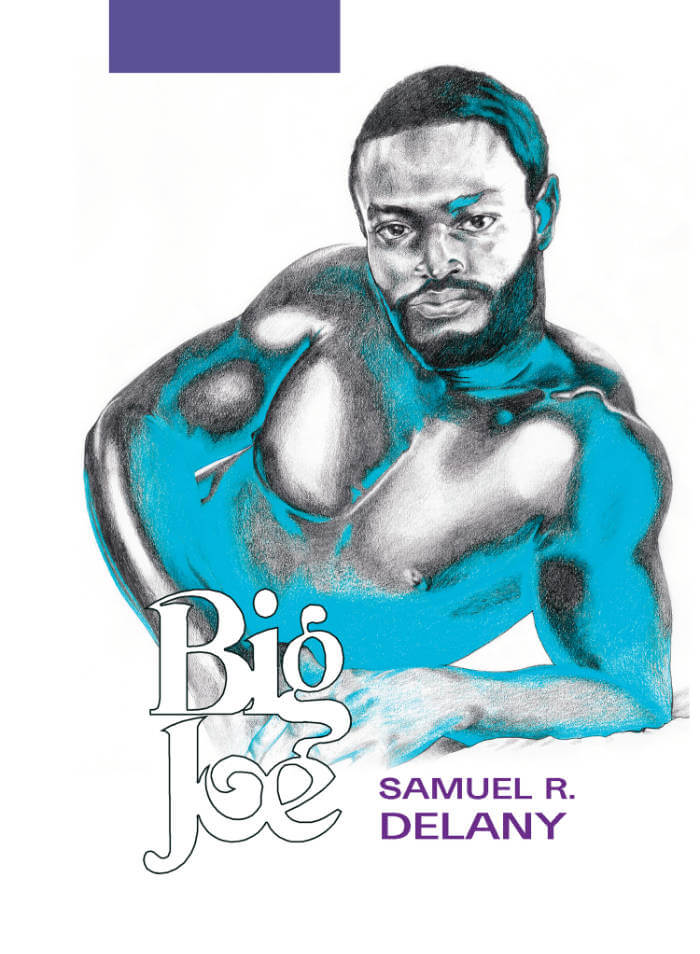
BIG JOE
A chance encounter with two older fellows at the movie theater has the young vagabond Ligie on his way to Lot-8, a trailer park down the road with an unconventional local reputation. There, Ligie meets Big Joe and his extended Lot-8-family: a tight-knit community of freaks all sectioned together by the landlord at the outskirts of town.
Weaving together colorful characters and outright carnal debauchery, BIG JOE is a radical pastoral of community, desire, and the strangeness of knowing one another.
Featuring color illustrations by Drake Carr and Sabrina Bockler.
Cover illustration by Drake Carr
Samuel R. Delany is the author of numerous books and novels, including the Nebula Award-winning Babel-17 and The Einstein Intersection, as well as Nova (now in a Library of America anthology) and Dhalgren. His 2007 novel Dark Reflections won the Stonewall Book Award. Other erotic novels include Equinox, Hogg, The Mad Man, Throu gh the Valley of the Nest of Spiders, and Shoat Rumblin. Delany was the subject of a 2007 documentary, The Polymath, by Fred Barney Taylor, and he has written a popular creative writing textbook, About Writing. He is the author of the widely taught Times Square Red/Times Square Blue and numerous books of essays; his book-length autobiographical essay, The Motion of Light in Water, won a Hugo Award in 1989. As e-books, paperbacks, or audiobooks, his works are available through his website at: www.samueldelany.com
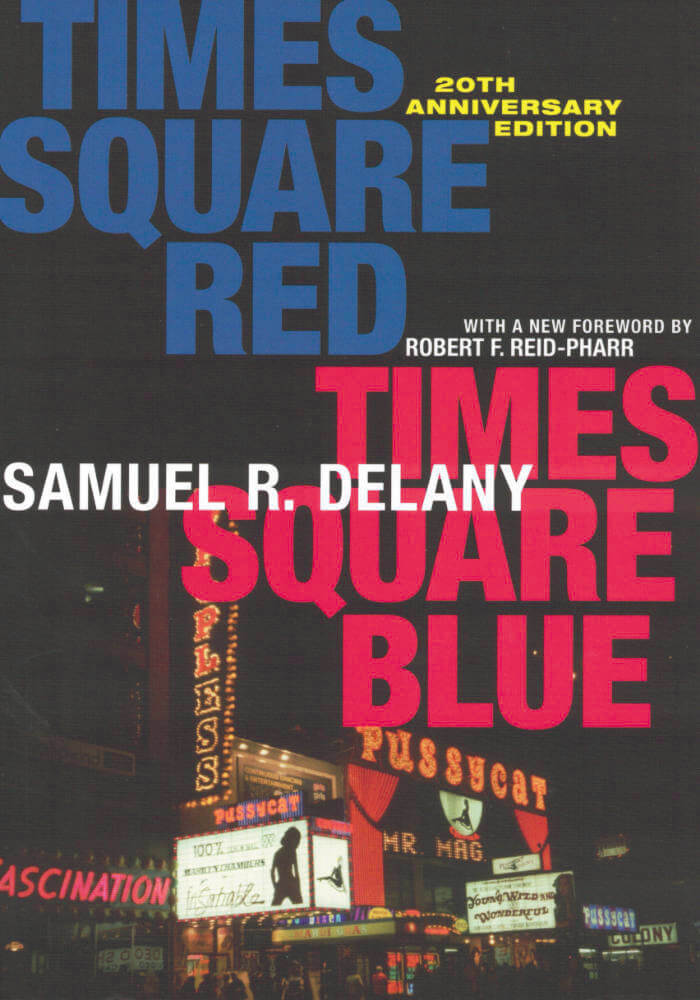
Times Square Red, Times Square Blue
Times Square Red, Times Square Blue is a non-fiction book written by science fiction author Samuel R. Delany and published in 1999 by the New York University Press.
The book is a compilation of two separate essays: Times Square Blue and ...Three, Two, One, Contact: Times Square Red.
This 20th Anniversary Edition contains an introduction by Robert Reid-Pharr.
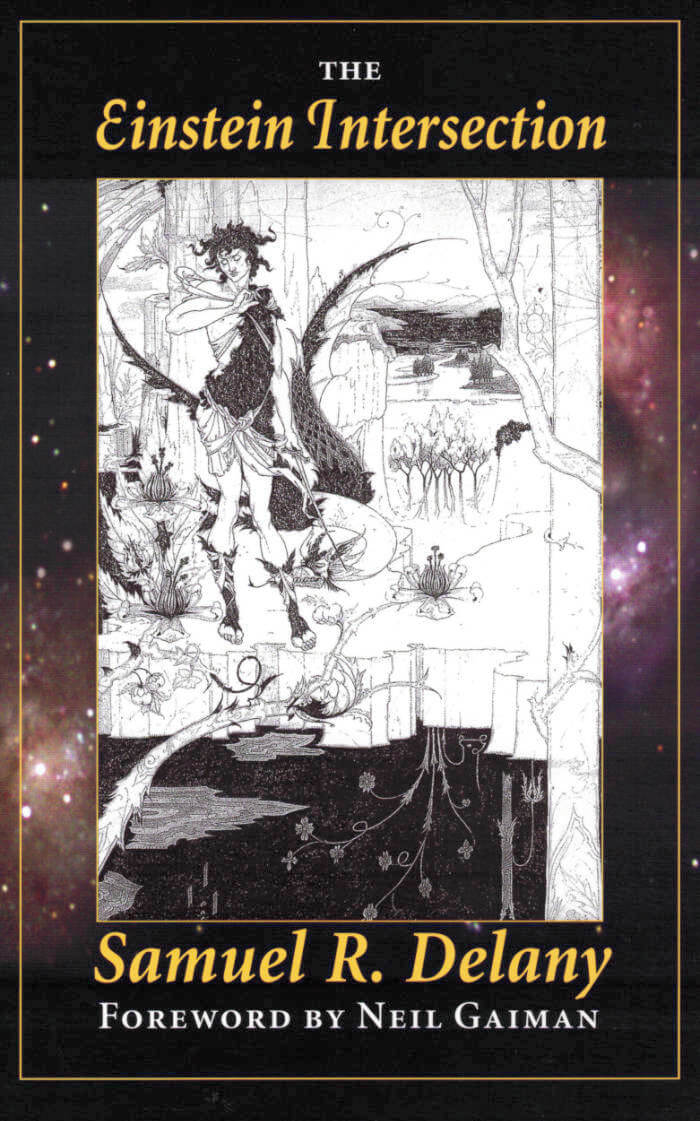
The Einstein Intersection
A nonhuman race reimagines human mythology.
The Einstein Intersection won the Nebula Award for best science fiction novel of 1967. The surface story tells of the problems a member of an alien race, Lo Lobey, has assimilating the mythology of earth, where his kind have settled among the leftover artifacts of humanity. The deeper tale concerns, however, the way those who are different must deal with the dominant cultural ideology. The tale follows Lobey's mythic quest for his lost love, Friza. In luminous and hallucinated language, it explores what new myths might emerge from the detritus of the human world as those who are different try to seize history and the day.
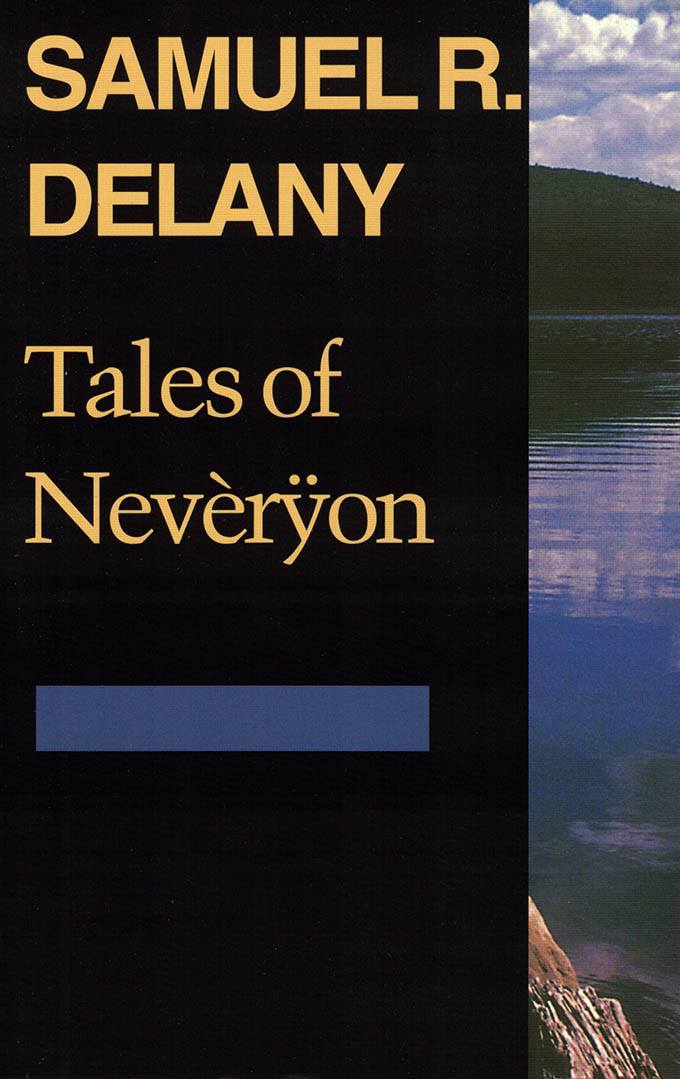
Tales of Nevèrÿon (Return to Neveryon, Book 1)
The eleven stories, novellas, and novels in Return to Nevèrÿon's four volumes chronicle a long-ago land on civilization's brink, perhaps in Asia or Africa, or even on the Mediterranean. Taken slave in childhood, Gorgik gains his freedom, leads a slave revolt, and becomes a minister of state, finally abolishing slavery. Ironically, however, he is sexually aroused by the iron slave collars of servitude. Does this contaminate his mission — or intensify it? Presumably elaborated from an ancient text of unknown geographical origin, the stories are sunk in translators' and commentators' introductions and appendices, forming a richly comic frame.
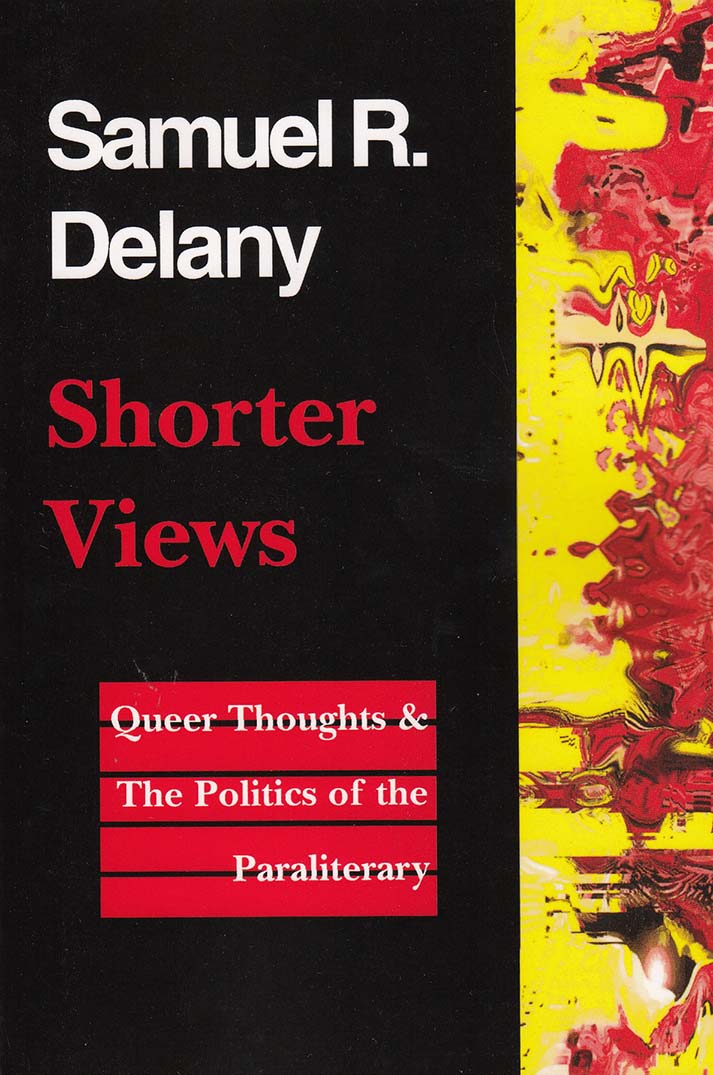
Shorter Views: Queer Thoughts & the Politics of the Paraliterary
In Shorter Views, Hugo and Nebula award-winning author Samuel R. Delany explores the closely felt issues of identity, race, and sexuality; the untangling of the intricacies of literary theory, and the writing process itself. The essays cluster around topics related to queer theory on the one hand, and on the other, questions concerning the paraliterary genres: science fiction, pornography, comics, and more.

Trouble on Triton
In a story as exciting as any science fiction adventure written, Samuel R. Delany's 1976 SF novel, originally published as Triton, takes us on a tour of a utopian society at war with our own Earth. High wit in this future comedy of manners allows Delany to question gender roles and sexual expectations at a level that, 20 years after it was written, still make it a coruscating portrait of "the happily reasonable man", Bron Helstrom - an immigrant to the embattled world of Triton, whose troubles become more and more complex, till there is nothing left for him to do but become a woman.
Against a background of high adventure, this minuet of a novel dances from the farthest limits of the solar system to Earth's own Outer Mongolia. Alternately funny and moving, it is a wide-ranging tale in which character after character turns out not to be what he - or she - seems.
And more
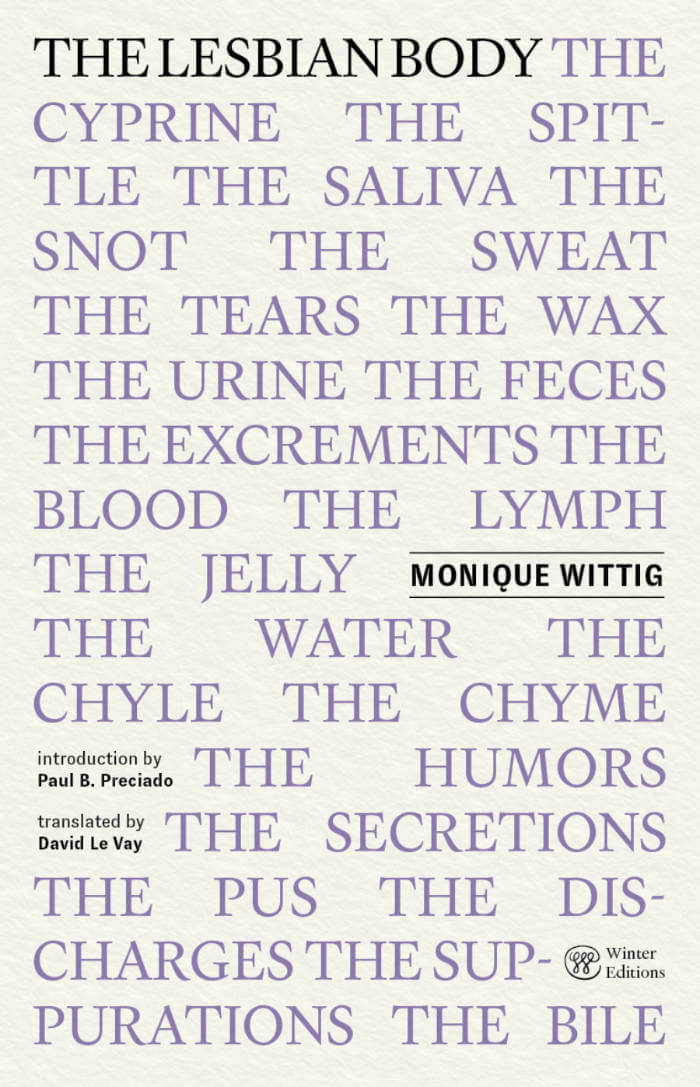
The Lesbian Body
In this genre- and gender-breaking work of theory-fiction, legendary writer and cofounder of the 1970s French feminist movement Monique Wittig celebrates the body—lesbian, literary and defiantly political—and challenges the order of heterosexuality in literature.
First published in French in 1973, The Lesbian Body mines the relationship between a lover and a beloved—also a writer and a text—to explore the ideological and historical constructions of the female subject. Organized according to the principle of montage, poetic passages are juxtaposed with anatomic lists that mark lesbian eros. Through expressions of joy, violence, and tenderness, the site of pleasure is celebrated. In her transfiguration of gender and its paradigms, Wittig transformed French vocabulary, feminizing grammar and lesbianizing myths. This edition brings the English translation of Wittig’s groundbreaking work back into circulation for the first time since the mid-1980s, revised according to the author's notes, and with an introduction by Paul B. Preciado.
“The Lesbian Body is a fundamental work of lesbian existence. Wittig's applied vision is a state of natural delirium, a revolutionary excess of utopianism, refusal, and mutual self-creation. Revisiting it reveals how much passionate free thought has been lost, and simultaneously, how many of her tropes and discoveries have integrated into our collective consciousness.” — Sarah Schulman
“In this stunning new rendering of The Lesbian Body by the French author, theorist, activist and teacher, the late Monique Wittig, we are plunged into an imagined world of passionate violence and erotic lesbian mayhem intertwined in strikingly bold poetic images. Wittig, in the reach and volatility of her imagination, stands alongside such important American writers as Audre Lorde, Adrienne Rich, and Valerie Solanas, all of whose work deserves to be read again, or for the first time.” — Esther Newton
“To read the book is to be forced by Wittig into another grammar and happily contaminated by its strange forms. You will never think straight again.” — Jack Halberstam
“For me, Wittig opened up a sense of the world that had been, quite literally, unimaginable. She tore us apart.” — Judith Butler
“Together with Ursula Le Guin and Samuel R. Delany, Wittig is the first to design a nonbinary utopia, a world in which the binary categorization of sexes and genders will have ceased to exist.” — Paul B. Preciado
Introduction by Paul B. Preciado
Translated by David Le Vay

We Circle Through The Night and Are Consumed by Fire
Simon Asencio, Pauline Hatzigeorgiou
This publication acts as a postscriptum to the exhibition project Through The Valley of The Nest of Spiders by Simon Asencio for SB34—The Pool in Brussels. Dedicated to Samuel R. Delany's sci-fi and sexutopia novel, the exhibition was conceived as a process of annotating the book, expanding on the ethics discussed by the characters of the novel through installation, performative readings and with the complicity of other artists and their works. This devious object pursues such an intertextual process, extending and disseminating the writings forged by the exhibition.
Cette publication se présente comme le post-scriptum de l'exposition de Simon Asencio Through The Valley of The Nest of Spiders pour SB34—The Pool à Bruxelles. Dédiée au roman de science-fiction et de sexutopie de Samuel R. Delany dont elle porte le titre, l'exposition a été pensée comme un processus d'annotation de ce livre, développant les formes éthiques mises en pratique par les personnages du récit, à travers des installations, des lectures et situations performatives, avec la complicité d'autres artistes. Cet objet interlope poursuit ce processus intertextuel, en prolongeant et disséminant les écritures forgées par l'exposition.
With contributions by / avec les contributions de: Reinhold Aman, Henry Andersen, Simon Asencio, Jen Brodie, Chloe Chignell, Jack Cox, Samuel R. Delany, Diana Duta, Loucka Fiagan, gladys, Stefa Govaart, Sean Gurd, Pauline Hatzigeorgiou, Maxime Jean-Baptiste, Bernard-Marie Koltès, David J. Melnick, Matthieu Michaut, Margaret Miller, LaTasha N. Nevada Diggs, Anouchka Oler Nussbaum, Grisélidis Réal, Páola Revenióti, Sabrina Seifried, Raphaëlle Serres, Valerie Solanas, sabrina soyer, Megan Susman.

The Western
Tilghman Alexander Goldsborough
Tilghman Alexander Goldsborough’s, "The Western" is a speech-act, an oral poem to be told aloud. As Goldsborough writes in his 1080PRESS newsletter (reproduced with the book), “are we willing to salt the field of USAmerica in order to grow sth somewhere else?//” The Western mines the history of the WEST—reimagining its landscape within a gluttony of images. But what happens when the wrongs of the AMERICAN WEST meant to be right-ed, are so large, so intensely evil and vile that the English language itself spaghettifies around it? What new histories will be erected—of Samuel R. Delany, Walter Rodney, and others trampled and run over by the wet tech ravages of future-past, to take us all across the river?
"In THE WESTERN, Tilghman Alexander Goldsborough composes to facilitate decomposition, setting a place for language, reader in tow, to reimagine itself, to become the space and act of reimagination. From out of the dark:
[,,,, a vision ::
the future arrives ::
barefoot & confident /
fondue oozing a triumphant grin"
— Yeukai Zimbwa (The Columbia Review)

Pinko Magazine Issue 2
This second print issue contains an interview with the abolitionist organizer Stevie Wilson, essays about nineties nightlife in support of queer intimacies in Santiago, Chile, Barbz against pinkwashing, a translation of the communization theorist Gilles Dauvé’s latest work on the reactionary tendencies in the sexual liberation movement in Weimar Germany, a missive by Samuel R. Delany, a ritual script by Lou Cornum, a meditation on intersex experiences as the untheorized marrow of trans liberation, and more. There are also world-building drawings by the artist Chitra Ganesh throughout.

How to Become The Daughters of Darkness
Ce numéro explore un thème croisé, l'histoire du cruising lesbien et la figure de la vampire (qui cruise partout pour se nourrir :)
Avec Felix Kazi-Tani, Nelle Gevers & Giulia Longoni, Lorca Coquelicot, Terri de la Peña, La Chocha, Lætitia Paviani, sabrina soyer, Mélanie Blaison, Dodie Bellamy, Martha Salimbeni, Joyce Rivière, Barbara Sirieix, Samuel R. Delany, slalomé·e, Sophie T. Lvoff, Lou·a, Növi Jacquet, Rachel Schenberg, Eleanor Arnasson, Estelle Benazet Heugenhauser.
Designé par la dandy des arts du caractère The graphiste Martha Salimbeni.

Queer Experimental Literature: The Affective Politics of Bad Reading
This volume argues that postwar writers queer the affective relations of reading through experiments with literary form. Tyler Bradway conceptualizes "bad reading" as an affective politics that stimulates queer relations of erotic and political belonging in the event of reading. These incipiently social relations press back against legal, economic, and discursive forces that reduce queerness into a mode of individuality.
Each chapter traces the affective politics of bad reading against moments when queer relationality is prohibited, obstructed, or destroyed—from the pre-Stonewall literary obscenity debates, through the AIDS crisis, to the emergence of neoliberal homonormativity and the gentrification of the queer avant-garde. Bradway contests the common narrative that experimental writing is too formalist to engender a mode of social imagination. Instead, he illuminates how queer experimental literature uses form to redraw the affective and social relations that structure the heteronormative public sphere.
Through close readings informed by affect theory, Queer Experimental Literature offers new perspectives on writers such as William S. Burroughs, Samuel R. Delany, Kathy Acker, Jeanette Winterson, Eve Kosofsky Sedgwick, Alison Bechdel, and Chuck Palahniuk.
Queer Experimental Literature ultimately reveals that the recent turn to affective reading in literary studies is underwritten by a para-academic history of bad reading that offers new idioms for understanding the affective agencies of queer aesthetics.
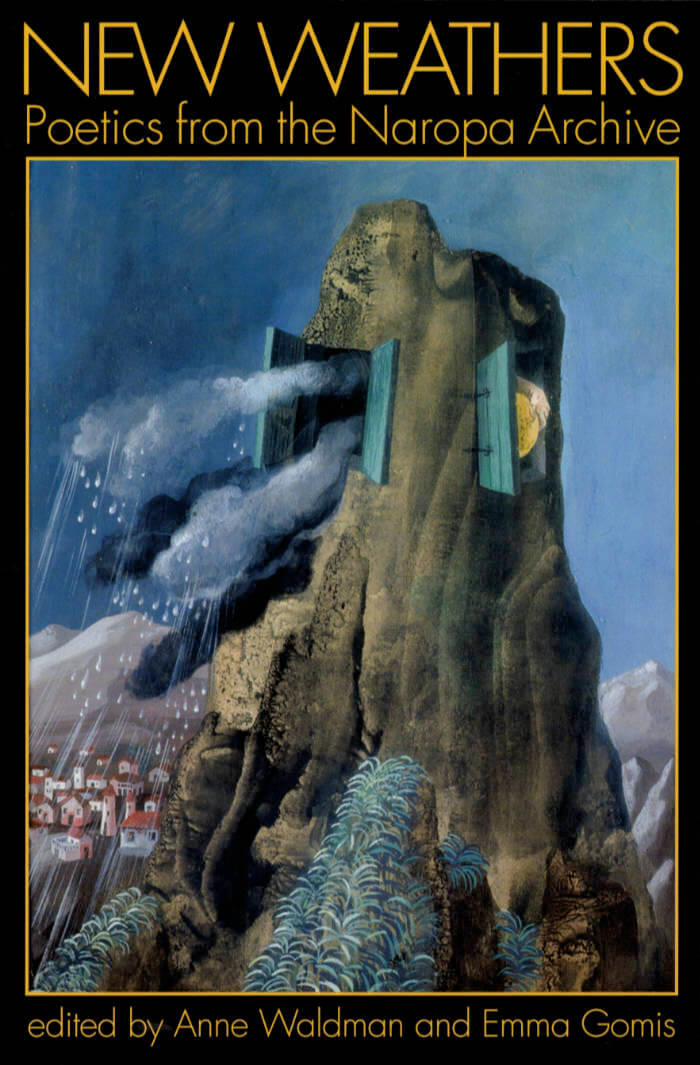
New Weathers: Poetics from the Naropa Archive: Lectures from the Naropa Archive
A collection of lectures transcribed from the audio archives of Naropa University's Summer Writing Program that represent a continuing lineage of experimental literary movements.
New Weathers asks us to consider how poetics might embolden deeper engagements with the world. Collected from the alternative education zone founded by Anne Waldman and Allen Ginsberg with the aim of opening up discourse and fostering political engagement, these texts invoke issues of gender and race-based injustice, the global climate crisis, and our possible extinction. They weave through our poetic community, the conversations we are having, the issues we are facing—our "new weathers" to posit strategies of resistance.
List of Contributors: Paula Gunn Allen, Amiri Baraka, Dan Beachy-Quick, Sherwin Bitsui, Robin Blaser, William S. Burroughs, Julie Carr, J'Lyn Chapman, Jos Charles, Jack Collom, Samuel R. Delany, kari edwards, Tongo Eisen-Martin, Tonya M. Foster, Forrest Gander, Alan Gilbert, Allen Ginsberg, Renee Gladman, Robert Glück, Lyn Hejinian, Lisa Jarnot, Kevin Killian, Thurston Moore, Fred Moten, Eileen Myles, Hoa Nguyen, Alice Notley, Akilah Oliver, M. NourbeSe Philip, Margaret Randall, Roger Reeves, Ariana Reines, Lisa Robertson, Ed Sanders, Andrew Schelling, Cedar Sigo, Eleni Sikelianos, Harry Smith, Edwin Torres, Cecilia Vicuña, Asiya Wadud, Peter Warshall, Eliot Weinberger, Peter Lamborn Wilson, and Ronaldo V. Wilson.

How to Become Irrésistibles
How to become Irrésistibles est une édition de l'école supérieure des beaux-arts de Bordeaux réalisée avec la maison d'édition How to Become.
Cette édition est née de l'énergie d'un groupe d'autrices étudiantes de l'école des beaux arts de Bordeaux. Elles (car il s'agit d'une majorité de femmes) se rassemblent dans les séminaires Irrésistibles – briser les cases (art-femmes-territoires) dirigés par Marie Legros, artiste et professeure. Ce séminaire a été créé par cette dernière en 2016 afin d'encourager les pratiques féministes dans l'écriture. Qu'est-ce que c'est ? Des façons autres d'écrire le genre (l'identité) et les genres (littéraires), la langue (nationale) et de faire entrer du commun dans l'écriture (en arrêtant d'en exclure les femmes, les homos, les personnes racisées, les prolos). Les étudiantes qui participent à ce séminaire, issues de nationalités différentes, s'en sont saisis pour tordre la généalogie poétique franco-française masculiniste. L'autrice et éditrice sabrina soyer (éditions How to become), invitée à prendre part aux recherches dans ce séminaire, a coordonné cet ouvrage en l'axant sur des échanges de traduction entre autrices et l'usage du français comme langue étrangère. Le livre explore – c'est à dire donne de la valeur à – différentes formes de contacts entre auteurices : traductions, réponses adressées, écriture sous influence ou fan fiction... Chaque langue et voix se tisse en écho à une autre, pas de poèmes isolés, un grand texte comme un grand corps amassé par rebonds et frottements.
Avec : Hani Yikyung Han, Nayun Eom, Charles Dauphinot, Layan Qarain, Viktoria Oresho, Samuel R. Delany, Seobin Park, Jie Liang, Rami Karim, Yu-Wen Wang, Ching-Chuan Kuo, Mélanie Blaison, Barbara Sirieix, sabrina soyer, Yan Tong Liu, Jessica Guez Karen Johanns, Marie Legros M, Esther Sauzet, Mira Mattar.

Pathetic Literature
A unique collection composed by the award-winning poet and writer, a global anthology of pieces from lesser-known classics by luminaries like Franz Kafka, Samuel R. Delany, and Gwendolyn Brooks to up-and-coming writers that examine pathos and feeling, giving a well-timed rehab to the word "pathetic"
"Literature is pathetic." So claims Eileen Myles in their bold and bracing introduction to Pathetic Literature, an exuberant collection of pieces ranging from poetry to theater to prose to something in between, all of which explore those so-called "pathetic" or sensitive feelings around which lives are built and revolutions are incited.
Myles first reclaimed the word for a seminar they taught at the University of California San Diego, rescuing it from the derision into which it had slipped and restoring its original meaning of inspiring emotion or feeling, from the Ancient Greek rhetorical method pathos. Their reinvention of "pathetic" formed the bedrock for this anthology, which includes a breathtaking 106 contributors, encompassing titans of global literature like Robert Walser, Jorge Luis Borges, Rumi, and Gwendolyn Brooks, queer icons and revolutionaries like Dodie Bellamy, Samuel R. Delany, and Bob Flanagan, as well as the invigorating newness and excitement of writers on the rise, including Nicole Wallace, Precious Okoyomon, and Will Farris. Creative nonfiction by Karla Cornejo Villavicencio, Jack Halberstam, and Porochista Khakpour rubs shoulders with poetry by Natalie Diaz, Victoria Chang, Lucille Clifton, and Ariana Reines, all joined by prose from Chester Himes, Djuna Barnes, Chris Kraus, and Qiu Miaojin, among so many others. The result is a matchless anthology that is as much an ongoing dialogue as an essential compendium of queer, revolutionary, joyful, and always moving literature.
From confrontations with suffering, embarrassment, and disquiet, to the comforts and consolations of finding one's familiar double in a poem, Pathetic Literature is a swarming taxonomy of ways to think differently and live pathetically on a polarized and fearful planet.

Cruiser L'Utopie
First French translation of José Esteban Muñoz's field defining work—an intellectual inspiration for a generation of LGBTQ scholars.
Cruiser l'utopie describes a movement, a drifting advance between theory, philosophy, art criticism and personal narrative. The works cited, narrated, are mixed with family or individual narrative and more academic considerations. This practice of queer theory and aesthetics is part of a new interpretation of hope as perceived by philosopher Ernst Bloch, articulated with black radical thought and the poetic research of authors such as Fred Moten and Eileen Myles.
Muñoz focuses here on the period of the Stonewall revolts (New York, 1969) and analyzes, for example, the works of Frank O'Hara, King Jone/Amiri Baraka, Andy Warhol, Kevin Avance, Samuel R. Delany, Fred Herko, Jill Johnston, Ray Johnson. Queer theory as a study has a new way of researching and writing, a form of hybridity between philosophy and cultural studies. The critique is, as if by anticipation, contained in the counter-normative artistic practice and daily life whose narratives, both subjective and historical, hint at a queer future, a place of transformation and liberation.
The text, translated from English by Alice Wambergue, is accompanied by a preface by Elisabeth Lebovici and a poem by Fred Moten.
José Esteban Muñoz (1967 - 2013) is a queer scholar and art theorist. Author of The Sense of Brown (published posthumously in 2020), Cruising Utopia, the Aftermath and Elsewhere of Queer Advent (2009), and Disidentifications: Queers of Color and the Performance of Politics (1999), he edited the collective works Pop Out: Queer Warhol (1996) and Everynight Life: Culture and Dance in Latin/o America (1997). Muñoz has long taught in the Department of Performance Studies at New York University's Tisch School of the Arts and edited the Sexual Cultures series at New University Press, where he has published works such as Jack Halberstam and Samuel Delany.
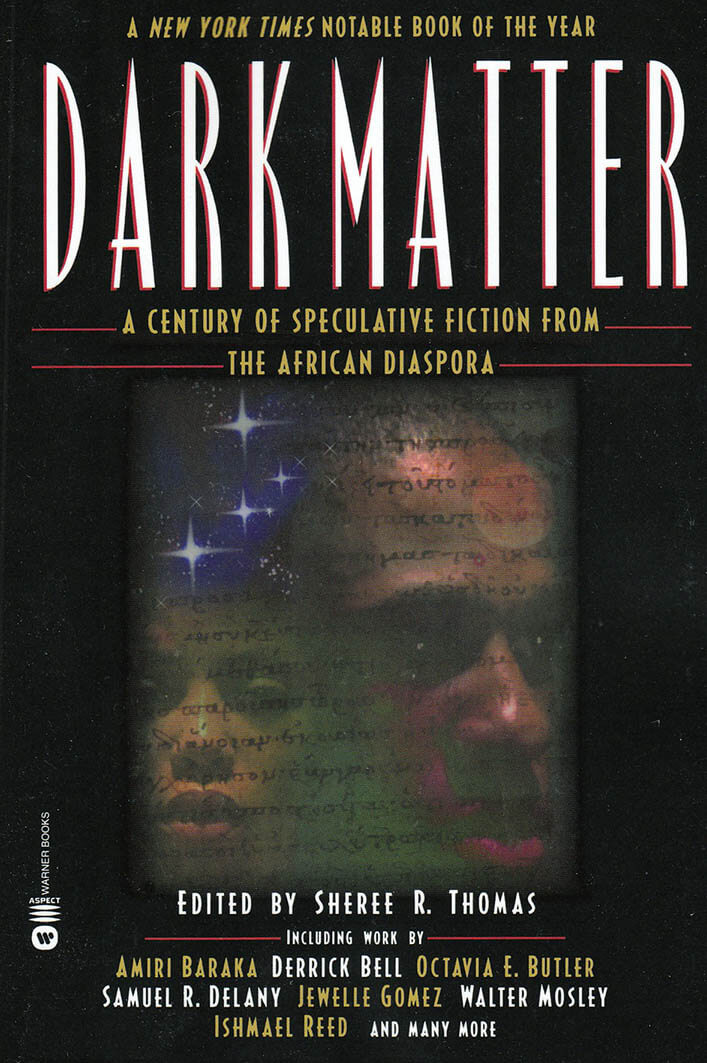
Dark Matter: A Century of Speculative Fiction from the African Diaspora
A Century of Speculative Fiction from the African Diaspora.
An important new anthology, the first of its kind, Dark Matter explores a century of fantastic fiction by preeminent and emerging luminaries of the African Disapora. A richly vibrant collection of stories and essays, it displays the brilliance of writers ranging from early pioneers such as W.E.B Du Bois, to famed authors including Samuel R. Delany and Octavia E. Butler, to such luminaries of the literary tradition as playwright-critic Amiri Baraka and satirist Ishmael Reed, as well as a spectrum of acclaimed new writers.
Astonishing, compelling, erotic, and profound stories of worlds within and beyond abound in Dark Matter. From the bittersweet legacies of Africa to utterly phantasmagoric future civilizations, here is a compliation of stories that transmute our human experience.
Published 2001.